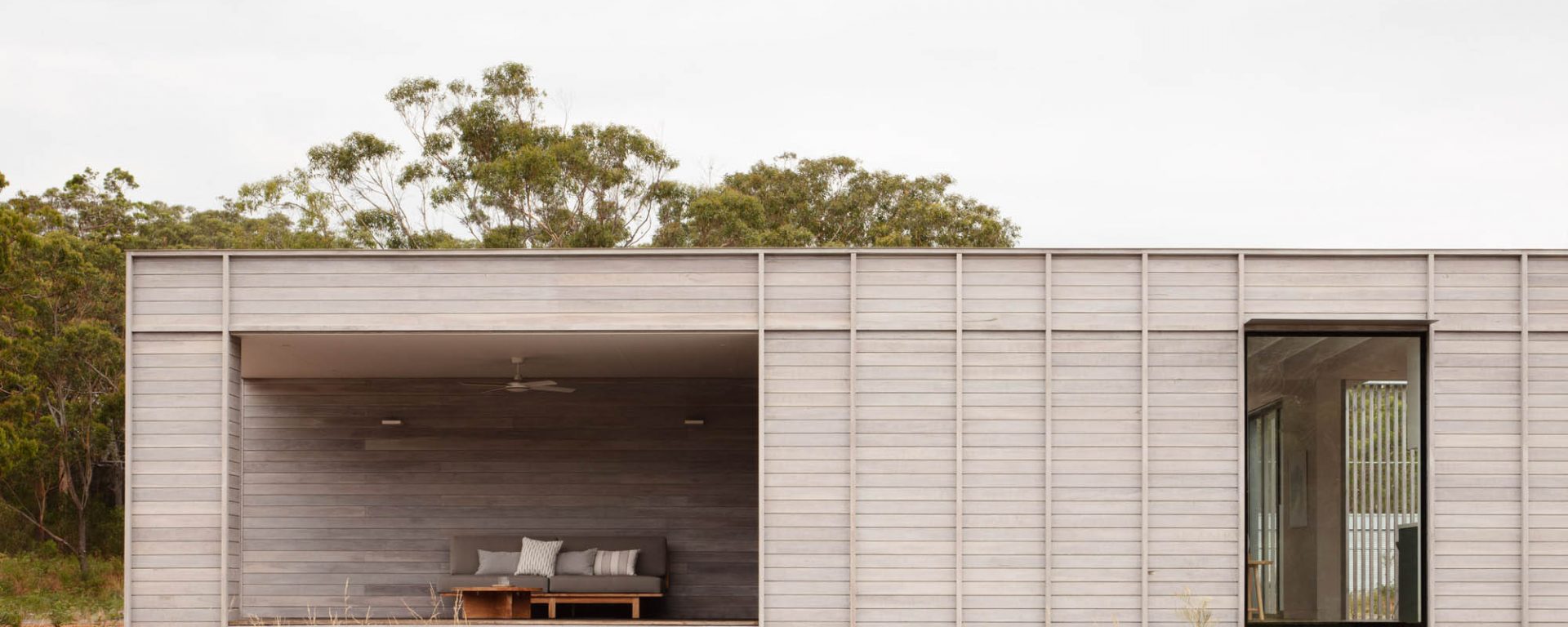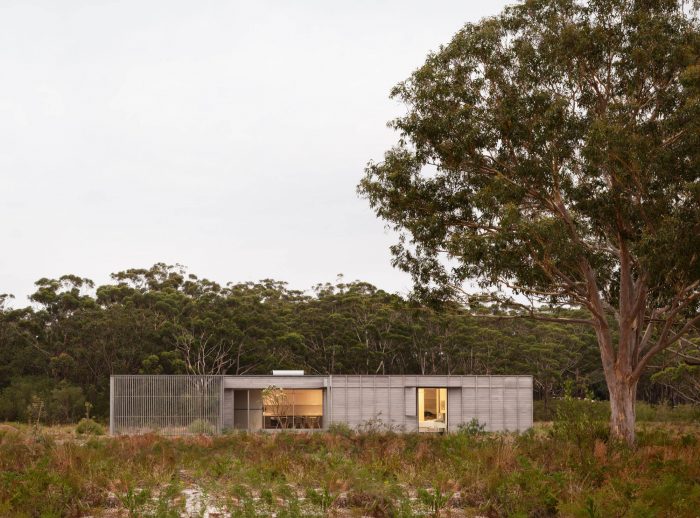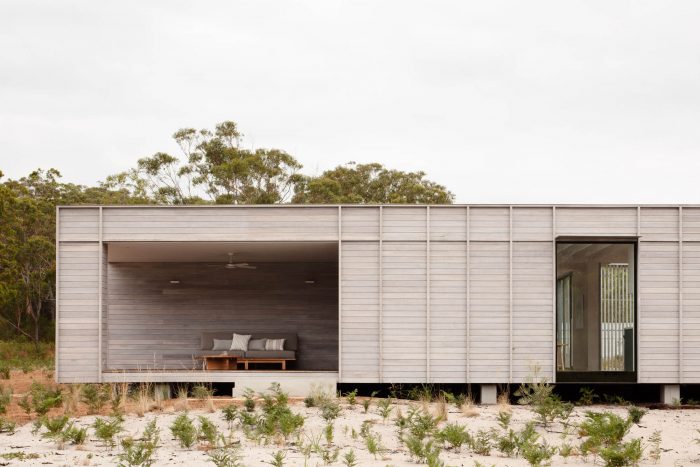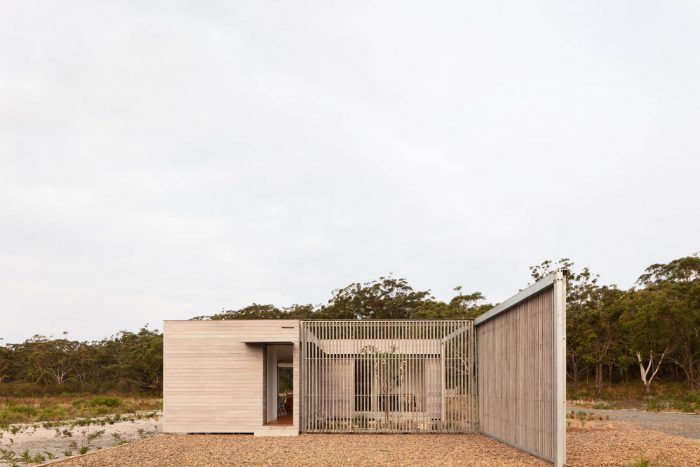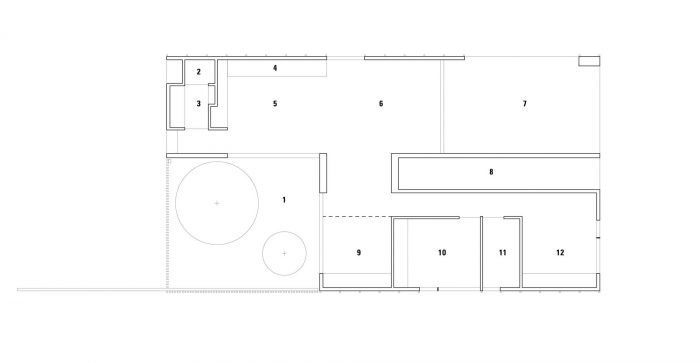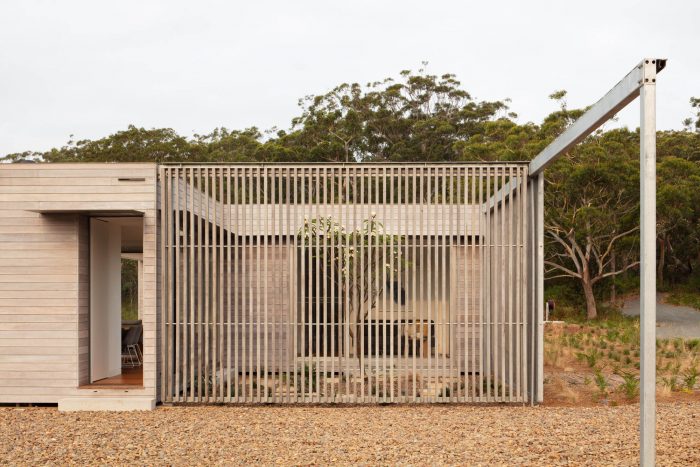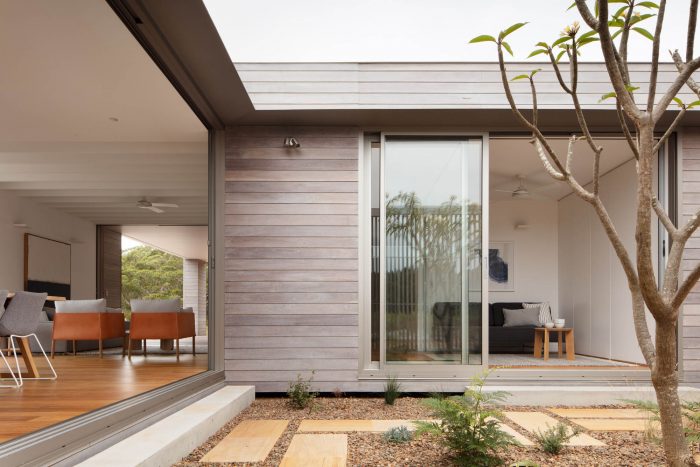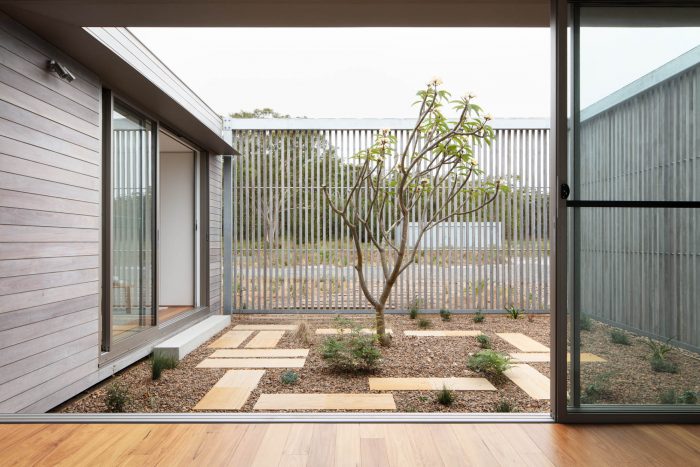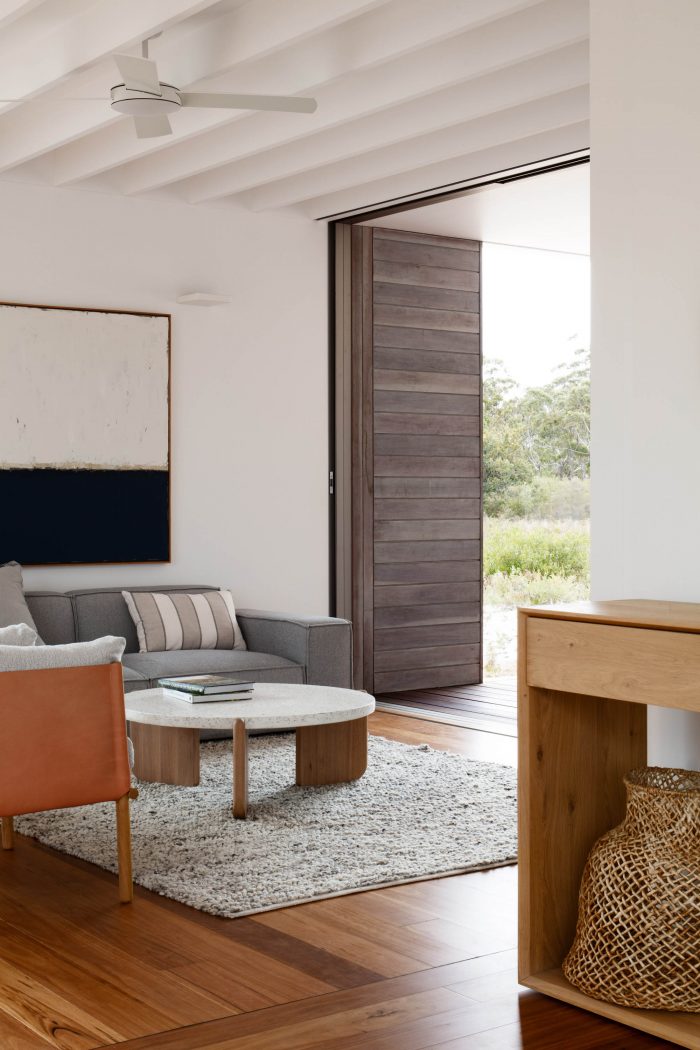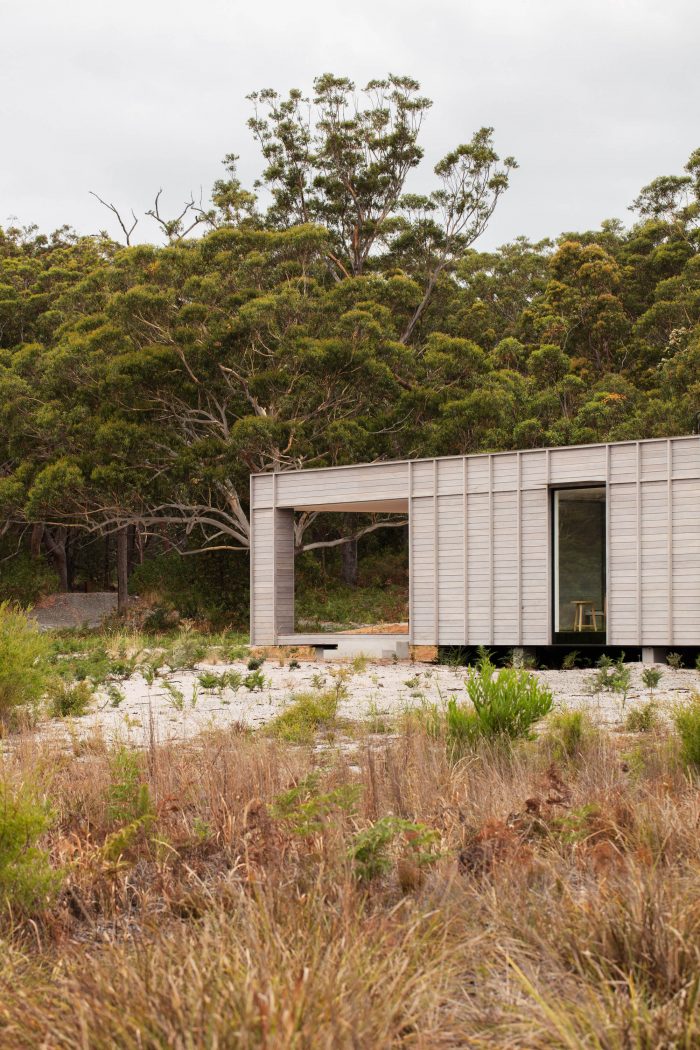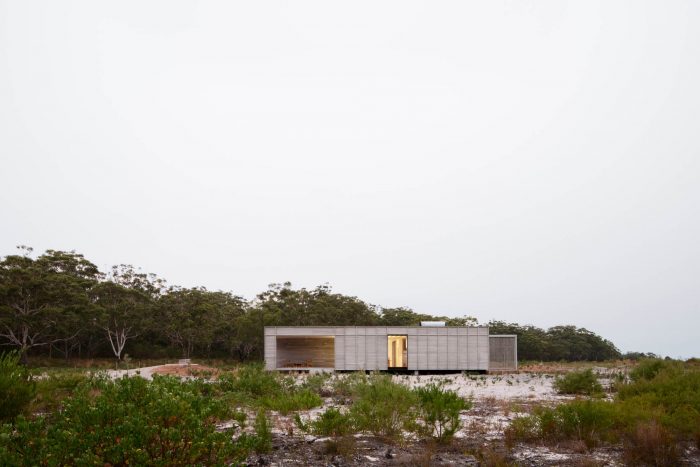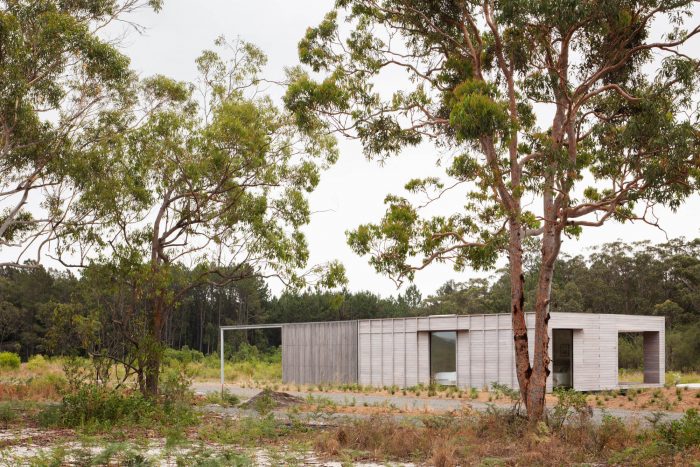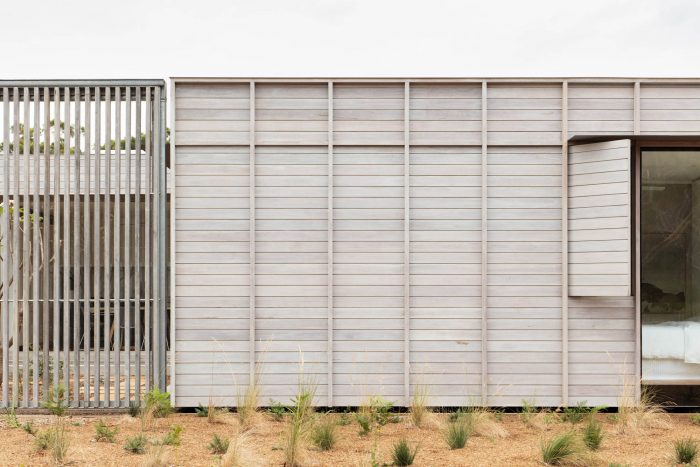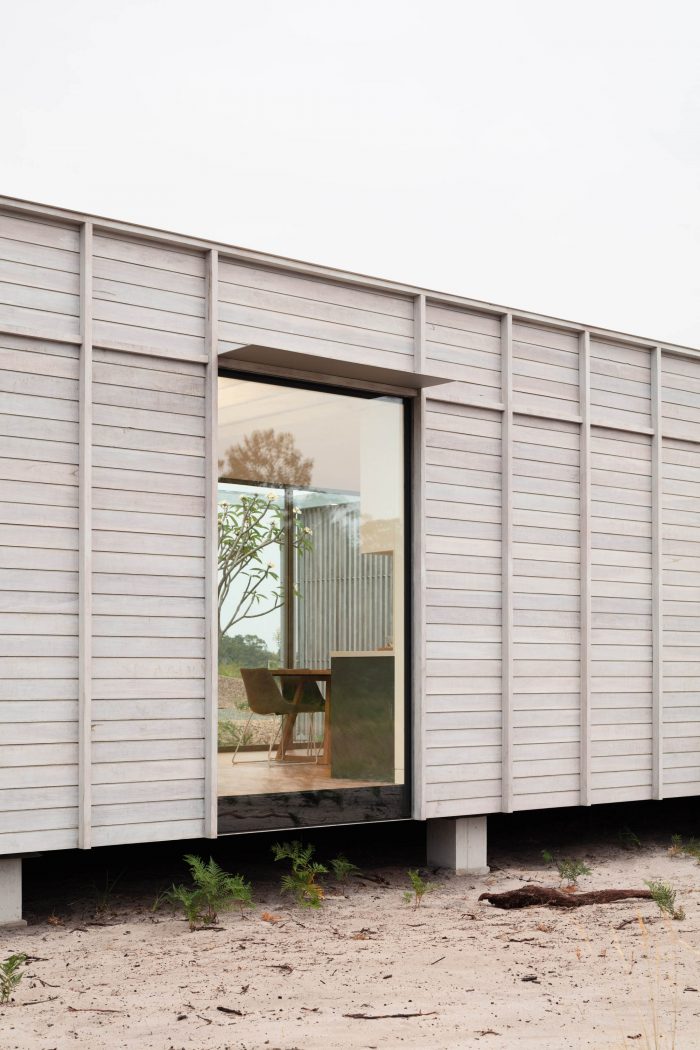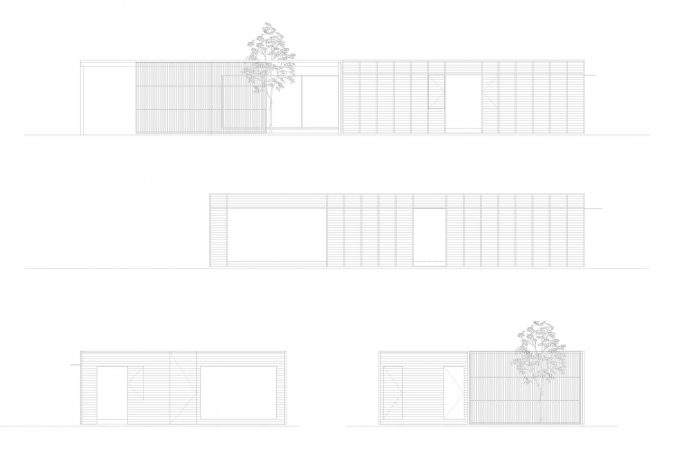庭院式住宅是一个预制的、离网的、对澳大利亚传统农村住宅的现代诠释。阳台被扩大,成为一个户外房间,而传统的周边花园被减少为一个封闭的庭院,使房子能够更直接地与周围的自然环境接触。住宅后部的滑动屏风允许在提供一个亲密的庭院或向广阔的景观开放之间灵活选择。96平方米的住宅挑战了典型澳大利亚住宅的规模和概念。该建筑是完全离网的,自己产生太阳能,并收集自己的雨水。被动式系统被用于自然通风和遮蔽建筑。
Courtyard House is a prefabricated, off grid, modern interpretation of the traditional Australian rural home. The verandah is enlarged to become an outdoor room, whilst the traditional perimeter garden is reduced to a contained courtyard to allow the house to engage more directly with its natural surroundings. A sliding screen to the rear of the dwelling allows flexibility between providing an intimate courtyard or opening up to the expansive landscape. At 96sqm the dwelling challenges the scale and notion of the typical Australian home. The building is completely off-grid, generates its own solar power, and harvests its own rainwater. Passive systems are used to naturally ventilate and shade the building.
预制的异地建筑使住宅可以轻巧地接触地面,而不会因侵入性的建筑方法而使场地退化。住宅坐落在空地的中心,作为一个三维物体漂浮在空间中。该建筑没有正面、背面或侧面的感觉,而是与四面的景观相接触。阳台和封闭的院子为室内和景观之间提供了一个中介的联系。
The prefabricated offsite construction allows the dwelling to lightly touch the ground without degrading the site with invasive construction methodologies. The dwelling sits in the centre of the clearing, resolved as a three-dimensional object floating in space. The building has no sense of a front, back or side, but rather engages with the landscape on all sides. The verandah and enclosed courtyard each provide a mediated connection between the interior and the landscape.
压缩的占地面积创造了一个温暖而亲密的环境,与环境有着动态的联系。大量的视觉连接穿过缩小的平面图,将居民与景观中不断变化的光线质量联系起来。我们的任务是设计一个小型的预制房屋,在非常小的占地面积内拥有宽敞的空间感,这在通常由狭窄比例决定的建筑类型中是一个挑战。
The compressed footprint creates a warm and intimate environment that has a dynamic connection to its environment. The multitude of visual connections that cut across the reduced floor plan connects the inhabitants with the ever-changing light quality of the landscape. The brief was to design a small prefabricated home that had a generous sense of space, within a very small footprint, a challenge in a building typology normally dictated by narrow proportions.
预制模块将被隐藏在建筑的整体形式中,掩盖了类型,并使结构在现场有一种永久性的感觉。预制模块通常的线性比例通过连接偏移的模块来掩盖,以创造一个更宽松和动态的生活配置。该设计要适应不同的场地条件,这是通过开发一个可以旋转或镜像的平面图来实现的,以应对场地的方向或方面。
The prefabricated modules were to be concealed in the overall form of the building, disguising the typology and giving the structure a sense of permanence on the site. The normally linear proportion of the prefabricated module is disguised by connecting offset modules to create a more generous and dynamic living configuration. The design was to be adapted to different site conditions, this was achieved by developing a floor plan that could be rotated or mirrored to respond to a site’s orientation or aspect.
Architects: CHROFI
Area: 96 m²
Year: 2018
Photographs: Clinton Weaver
Manufacturers: GRAPHISOFT, Sculptform, Big River Group, Caesarstone, Parisi, Academy Tiles, Alspec – Pro Gluide, Bosch, Euroluce, Lysaght Steel
Landscape: Somewhere
Clients:FABPREFAB
Engineering:Building Services Engineers
Consultants:SDA Structures
City:Mungo Brush
Country:Australia

